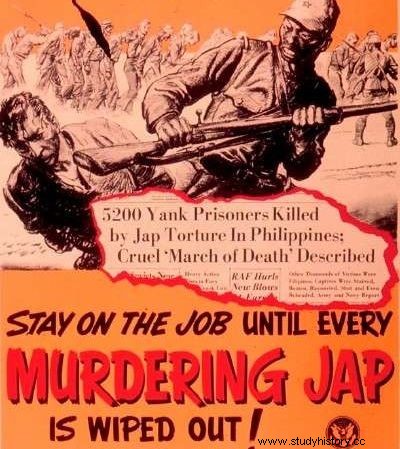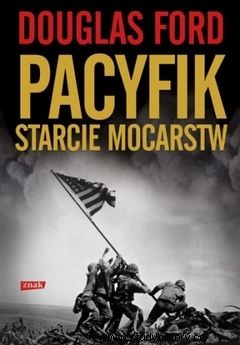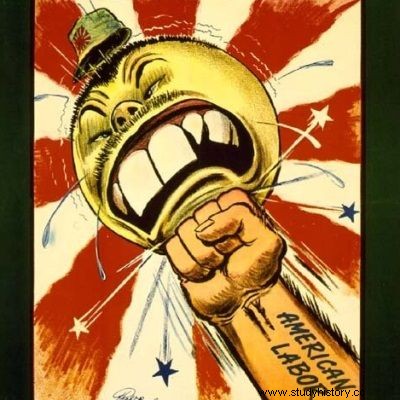American writers, historians and the entire state apparatus have spent decades trying to create a perfect image of the US Army soldier of World War II. A young patriot, ready to give his life for freedom and democracy. The reality was much more complicated.
"In order to bring peace, we must murder all Japanese, right to your feet," was exactly what half of the respondents expressed in a survey of American soldiers in 1943. According to this gigantic thing of men, not only was the best, but even the only way to victory, mass genocide on a nation of 70 million.
It was by no means accidental. Even less so, it was not the result of a manipulated or poorly conducted study. The American IG really held views that were deceptively similar to those instilled in Nazi youth in Germany . The American authorities and the media cooperating with them made efforts to do so.

Keep working until all Japanese killers are pulverized!
Propaganda in the service of power
Since the war in the Pacific was fought thousands of kilometers off the coast of America, the government feared as early as 1941 that the public would quickly lose interest in it, and that soldiers sent to the ends of the world would not evoke the will to fight. To counter this threat, the Japanese were portrayed from the outset as contemptible subhumans. One of the Allied generals spoke to his subordinates as follows:“You are fighting a cunning, cruel and merciless opponent. Deep down, it is an inhuman beast that fights like a savage. Kill him or he'll kill you.
In Western propaganda, the Japanese have been referred to as the "yellow plague" with which no agreement can be reached, because it uses "irrational and unscientific" thinking. The weekly "Time" always featured Japanese soldiers in the form of chimpanzees swinging in trees with rifles in their hands.

In the USA it was considered an act of patriotism to display in public (eg in shop windows) signs saying "The season for the Japanese is open". There were also, as if to joke, "licenses to kill yolks".
The soldiers absorbed such patterns without any problems. As Douglas Ford explains in his book The Pacific. A clash of powers ", many military men compared killing enemies to " exterminating extremely nuisance pests " . This is confirmed by the words of Ernie Pyle, one of the most distinguished war correspondents. In an account from the Pacific front, he wrote:"The Japanese were viewed as repulsive subhumans, in the same way that humans treat mice or cockroaches."
Similar opinions were expressed by veterans of the war with Japan. One of them stated in the book "Into the Rising Sun": "It never crossed my mind that I was killing a human being" . Another military pilot, Lee Scott, even stated that he "laughed in his soul whenever he found out that he had killed another poisonous spider or scorpion."

Every blow (to a Japanese face) matters!
Pest exterminators
During the bloody landing on Iwo Jima many American soldiers went into battle wearing helmets with the inscription:"Pest Exterminator" . This minor fact is not mentioned in textbooks or books praising the flawless American heroes.
Of course, the Japanese have committed beastly crimes in the war, but the Americans cannot feel innocent either. In 1945, national insensitivity and contempt for egg yolks meant that President Truman was able to drop atomic bombs on Hiroshima and Nagasaki without hesitation. Eventually, his own soldiers called for the Japanese to be knocked out.
Source:
- Douglas Ford, Pacific. Clash of powers , Znak Publishing House 2013.
